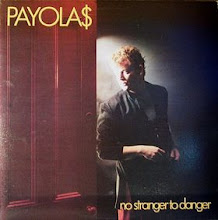 Given my love of serialized fiction, classic cinema, and B movies, it is odd that I have never watched a film serial from start to finish before now. I have seen selected episodes from some serials, including the classic Flash Gordon from 1936, and I am familiar with the overall structure and production style of these efforts, but I have never gone out of my way to watch one. Luckily, I can wipe that off my list of cinema fan failings, having now watched the 1949 Columbia Pictures serial Batman and Robin, from producer Sam Katzman and director Spencer Bennet.
Given my love of serialized fiction, classic cinema, and B movies, it is odd that I have never watched a film serial from start to finish before now. I have seen selected episodes from some serials, including the classic Flash Gordon from 1936, and I am familiar with the overall structure and production style of these efforts, but I have never gone out of my way to watch one. Luckily, I can wipe that off my list of cinema fan failings, having now watched the 1949 Columbia Pictures serial Batman and Robin, from producer Sam Katzman and director Spencer Bennet.From what I have been able to find online, starting with a Sam Katzman serial might not be considered ideal for diving into the history of serials. Katzman’s productions appear to have a reputation for being cheap, quickly produced works, a far cry from the earlier noted Flash Gordon serials which were expensive productions, by serial standards. And indeed, the cheapness does show on screen in Batman and Robin, from the poorly designed Batman cowl, to the low budget animation which appears from time to time, and the fact that the Batmobile is a simple 1949 Mercury. Worse, the writing is often lacking, leaving the film full of plot holes and lapses in logic, problems which are exacerbated by shoddy production values and direction.
Yet, I despite these clear and abundant flaws, Batman and Robin remains an oddly fascinating and entertaining experience, particularly when considered within the context of Batman’s later cinematic adventures. Batman and Robin manages to be remarkably faithful to its comic book source material, and despite the lapses in logic, the presence of an odd super villian, and beyond questionable science, the serial actually manages to take itself seriously enough to be a legitimate and noteworthy adaptation of the character. At the very least, it is better than the other Batman and Robin (Schumacher 1997).
In Batman and Robin, the dynamic duo (Robert Lowery and Johnny Duncan) are caught in a battle with a mysterious foe known as “the Wizard,” who has stolen a remote control device that is capable of controlling automobiles, trains and planes. As Batman and Robin attempt to solve the mystery of who the Wizard is and retrieve the device, they must also contend with photojournalist Vicki Vale (Jane Adams), Bruce Wayne’s romantic partner, as she comes closer to figuring out just who Batman and Robin really are.
Given the format and era in which the serial was produced, it should be no surprise that Batman and Robin is bereft of the characterization and the psychological depth of both Tim Burton and Christopher Nolan’s live action Batman films: the point is to get on with the adventure, not spend time studying Batman’s psychology. Having said that, Batman and Robin does ask that the viewer invest in the adventure taking place, rather than playing the concept and adventure for deliberate laughs, unlike other adaptations. Batman and Robin here are heroic and hardworking figures in this film, planning stakeouts, searching for clues, and engaging in fisticuffs with low level thugs. Moreover, they are far from the demigod Batman and Robin written by Grant Morrison, with this Batman and Robin being more than capable of making mistakes and being injured. The logic of the adventure/mystery itself might not always make sense, but the effort to ground the film in some semblance of reality is appreciated.
Given the format and era in which the serial was produced, it should be no surprise that Batman and Robin is bereft of the characterization and the psychological depth of both Tim Burton and Christopher Nolan’s live action Batman films: the point is to get on with the adventure, not spend time studying Batman’s psychology. Having said that, Batman and Robin does ask that the viewer invest in the adventure taking place, rather than playing the concept and adventure for deliberate laughs, unlike other adaptations. Batman and Robin here are heroic and hardworking figures in this film, planning stakeouts, searching for clues, and engaging in fisticuffs with low level thugs. Moreover, they are far from the demigod Batman and Robin written by Grant Morrison, with this Batman and Robin being more than capable of making mistakes and being injured. The logic of the adventure/mystery itself might not always make sense, but the effort to ground the film in some semblance of reality is appreciated.
As the title characters, Robert Lowery and Johnny Duncan make for a solid, if unremarkable, set of leading men. Lowery struggles somewhat as Batman, working hard to overcome the costume which doesn’t make his Batman the most formidable looking of heroes. However, Lowery is more comfortable in the Bruce Wayne persona, which actually is one of the film’s more memorable achievements. Like the comics, the public Bruce Wayne is used to deflect people from connecting Wayne to Batman. However, unlike the pompous playboy or recent films and comics, Wayne here is played as a boring, lazy and borderline narcoleptic individual, which oddly enough does make sense. After fighting a long battle against crime each day, why wouldn’t Bruce be tired, and use that to his advantage? Duncan is given less to work with, but his youthful enthusiasm makes him a memorable balance to Lowery’s calm, collected Batman.
More surprising than either of the title characters though is the portrayal of Vicki Vale. While technically Bruce Wayne’s love interest, Vale spends more time as a take charge journalist who doesn’t simply wait around for Batman to rescue her (even though she is rescued at a few points). Yes, this type of characterization was developed long before by the likes of actress Katherine Hepburn, but to see it featured so prominently in a boy’s adventure serial is still quite shocking. Some of the writing remains questionable surrounding the character, such as why she is interested in Bruce Wayne when all Bruce does is act like a self centered, boring jerk, but Jane Adams brings enough life to the character that even the most questionable of scenes are usually sold by her energy and spunk.
More surprising than either of the title characters though is the portrayal of Vicki Vale. While technically Bruce Wayne’s love interest, Vale spends more time as a take charge journalist who doesn’t simply wait around for Batman to rescue her (even though she is rescued at a few points). Yes, this type of characterization was developed long before by the likes of actress Katherine Hepburn, but to see it featured so prominently in a boy’s adventure serial is still quite shocking. Some of the writing remains questionable surrounding the character, such as why she is interested in Bruce Wayne when all Bruce does is act like a self centered, boring jerk, but Jane Adams brings enough life to the character that even the most questionable of scenes are usually sold by her energy and spunk.
I don’t want to give the impression that I am ignoring the serial’s various flaws however. For starters, the central threat of the remote control device makes little sense: how is it that devices that are, by all accounts, not operated by remote able to be remote controlled? Or why doesn’t Batman, Robin or Commissioner Gordon (Lyle Talbot) actually investigate radio personality Brown if they wonder where he is getting his information from? Problems such as these of course have a simple answer in that the plot requires the padding to stretch the story out, but it is hardly an excuse. Other problems have less clear answers, such as why Bruce Wayne, as a rich playboy, would live in the suburbs rather than, say, a mansion that would give him more cover for his activities. The answer might have been that a mansion set and/or location would have been too much for the film’s budget, except that the filmmakers clearly had a mansion set to use for another character’s home in the film.
Such flaws however tend to add to the film’s overall charm and give it a layer of unintended but amusing comedy, which would sink the production if it were not so innocent. And really, that is what allows Batman and Robin to hold up: it aims to do nothing more than to entertain with its limited resources. While it may not be the best adaptation of the character ever committed to film, Batman and Robin does have the distinction of being an entertaining adaptation that is worth checking out for fans of B cinema and the Batman character. Plus, the film is filled with enough fistfights, car chases and explosions to live up to the serial’s promise of exciting adventure.
Given my enjoyment of this film serial, I will soon be delving into more of the Classic Hollywood era film serials which gave birth to the George Lucas/Steven Spielberg era blockbusters. But before I get into those, there is a matter of reviewing two genuine science fiction film classics from the past two years…








I've seen some, but not all, of this serial. Were you aware that the earlier serial (also available on DVD and simply titled Batman) was trimmed down to feature length and released as a comedy? While the original serial episodes were played as straight adventure, apparently they were so bad (and the racism so apparent in Japanese villain Dr. Daka) that it played better as comedy (the comedic version was released under the title An Evening with Batman and Robin).
ReplyDeleteI've heard this, and I actually have that serial (and both of the Kirk Allen Superman serials) on order from Amazon. I will probably start with the 1943 Batman first, just so I can finally say I've seen every live action Batman on film. Well, that and review it.
ReplyDeleteAlso, I have re-edited the review to eliminate some of the more glaring mistakes.
ReplyDeleteIf you look closely, the exterior of the suburban home of Bruce Wayne is actually the same home belonging to Roger Murtagh in all four Lethal Weapon movies. It's a part of the Warner Bros Ranch. Look close enough, and several other locations are also from this set.
ReplyDeletehttp://www.1164.com/ranch/photos/1162/index.html
Thanks Kyle! Now I need to rewatch the Leathal Weapon films...
ReplyDelete